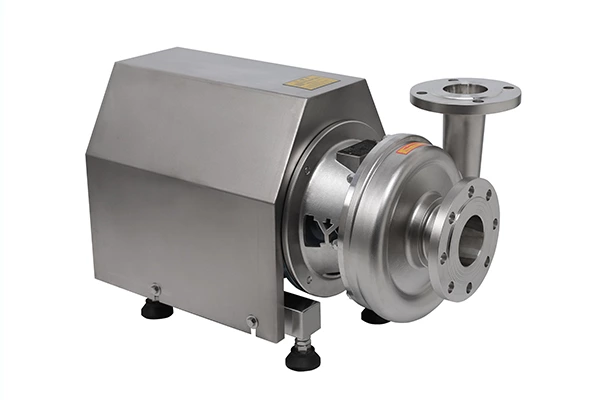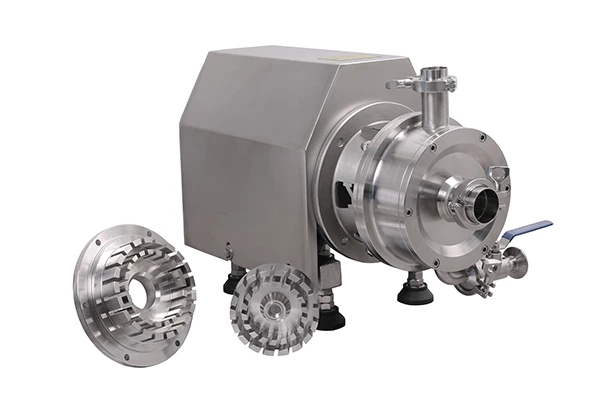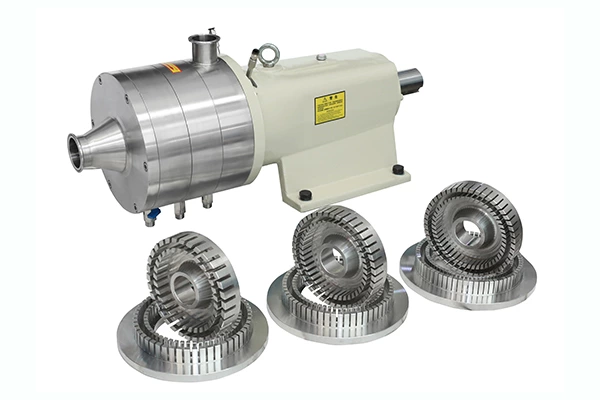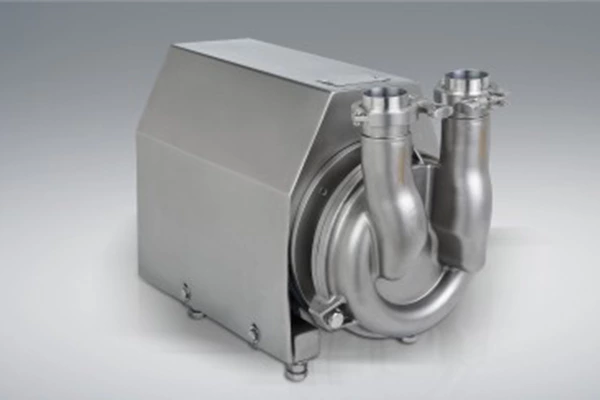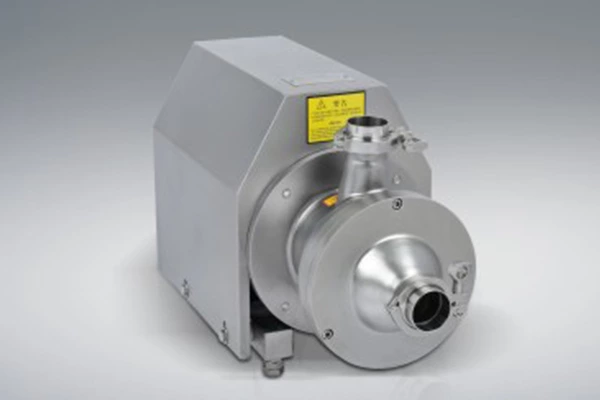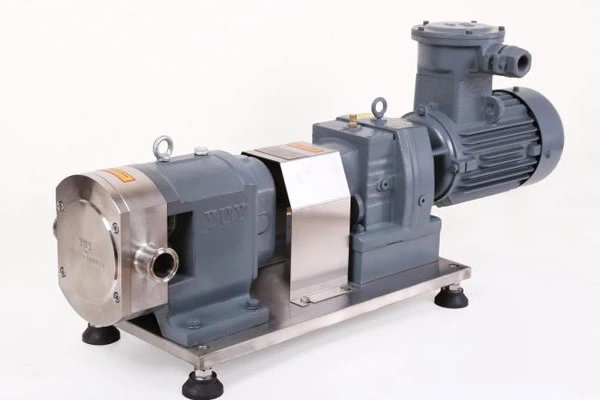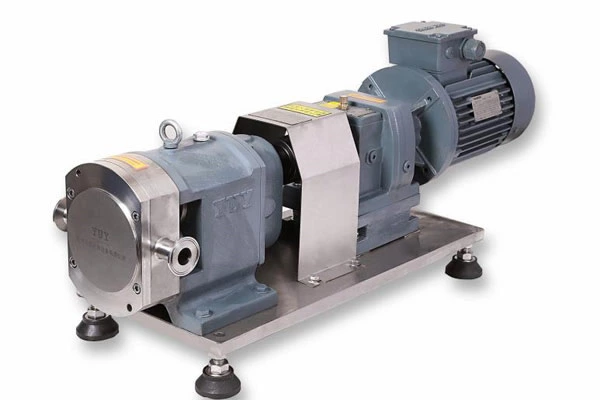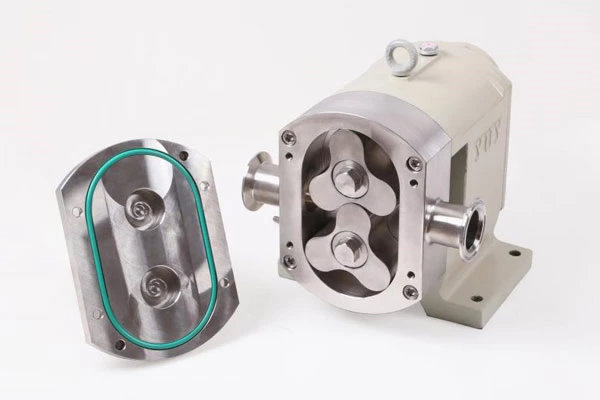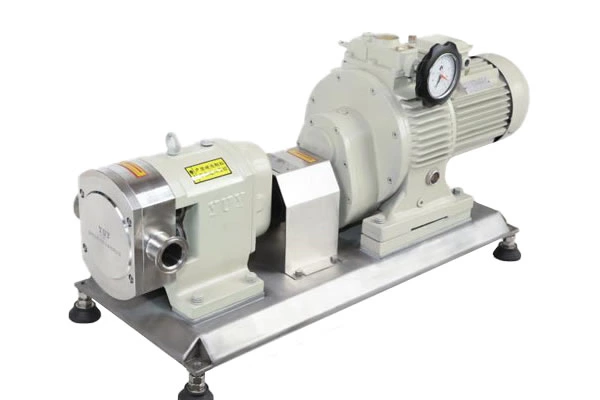Causes And Solutions For Burning Out Of Sanitary Volute Pump
There are several types of Sanitary Volute Pump. The coils in the motor are oil-immersed, water-immersed, and dry. You must read the instructions before use. Don't make a mistake. If you don't use it for a long time, you must turn the impeller before use, otherwise it will get stuck and burn due to long-term disuse. Before turning on the pump, the suction pipe and the pump must be filled with liquid. After turning on the pump, the impeller rotates at high speed, and the liquid in it rotates with the blades. Under the action of centrifugal force, it flies away from the impeller and shoots out. The ejected liquid gradually slows down in the diffusion chamber of the pump casing, and the pressure gradually increases, and then flows out from the pump outlet and the discharge pipe. At this time, at the center of the blade, the liquid is thrown to the surroundings to form a vacuum low-pressure area with neither air nor liquid. The liquid in the liquid pool flows into the pump through the suction pipe under the action of the atmospheric pressure on the pool surface. The liquid is continuously sucked up from the liquid pool and continuously flows out from the discharge pipe.
1. The ground wire is connected to the wrong power supply. There are four cores in the cable of the sanitary volute pump. Be careful not to connect the ground wire as the power cord.
2. The mechanical seal of the sanitary volute pump is damaged and leaks. Use a megohmmeter to check the insulation resistance of the sanitary volute pump frequently. If the insulation resistance decreases, take maintenance measures in time to prevent the motor from burning out.
3. Water enters after the cable is damaged. Check the insulation resistance of the sanitary volute pump frequently.
4. The impeller is stuck. When the impeller is stuck and cannot rotate, the current increases compared to the rated value. Over time, the stator winding of the sanitary volute pump will soon burn out.
5. The two ends of the stator winding touch the casing and the winding breaks down to the ground. 6. The sanitary volute pump is "started" and "stopped" too frequently.
7. The dehydration operation time of the submerged sanitary volute pump is too long. The dehydration operation time of the sanitary volute pump can only be about 1 minute. After a long time, the temperature of the electric pump rises due to poor heat dissipation.
8. Phase-missing operation. When the sanitary volute pump is working in the phase loss state, the current is much larger than the rated value. At this time, the temperature of the winding of the sanitary volute pump rises. Over time, the stator winding will be burned.
1. The main reasons affecting the normal operation of the sanitary volute pump:
Under normal circumstances, the main factors affecting the normal operation of the sanitary volute pump are as follows.
(1) Leakage problem. The characteristic of the sanitary volute pump is that the pump is integrated with the machine and immersed in water together, so the leakage problem is one of the important factors affecting the normal operation of the sanitary volute pump.
(2) Stalling. When the sanitary volute pump is stalled, a stalling current of 5 to 7 times the normal full-load current will be generated on the stator winding. If there is no protective measure, the sanitary volute pump will burn out quickly. There are many reasons for the stalling of the sanitary volute pump, such as impeller jamming, mechanical seal fragments jamming the shaft, dirt entanglement, etc.
(3) The power supply voltage is too low or the frequency is too low.
(4) Wear and rust. Wear will greatly reduce the performance of the electric pump, and the flow rate, head and efficiency will also decrease accordingly. The rust on the impeller and pump cover will also cause stalling. The rust of the parts of the sanitary volute pump will not only affect the performance of the water pump, but also shorten its service life.
(5) The cable is broken or broken. The cable is broken or broken, which is not only easy to cause electric shock accidents, but also very likely to be in a two-phase working state when the water pump is running, which will not produce water and easily damage the motor.
2. Operation and maintenance of sanitary volute pumps
(1) Check whether the cable is broken or broken. Before use, observe the appearance of the cable and use a multimeter or megohmmeter to check whether the cable is connected. There should be no oil leakage at the cable outlet.
(2) Before using a new pump or starting a long-term standby pump, use a megohmmeter to measure the insulation of the stator to the casing to be no less than 1MQ. Otherwise, the motor winding should be dried to improve the insulation level. The insulation resistance value of the submersible electric pump when it leaves the factory is generally more than 50Mr2 when measured in the cold state.
(3) Check whether the submersible pump is leaking oil. The possible oil leakage paths of the submersible pump include the cable connection, the seal of the oil filling screw in the sealing chamber, and the O-ring seal at the seal. When checking, make sure whether there is real oil leakage. The reason for oil leakage at the oil filling screw is that the screw is not tightened, or the oil-resistant rubber gasket under the screw is damaged. If it is confirmed that the O-ring seal is leaking oil, it is mostly because the O-ring seal fails. At this time, the pump needs to be disassembled and the seal ring replaced.
(4) Before reusing a submersible pump that has been out of service for a long time, the uppermost pump casing should be disassembled, and the impeller should be turned before starting to prevent rusting of parts and burning of the motor windings due to failure to start water. This is more important for water-filled submersible pumps.
